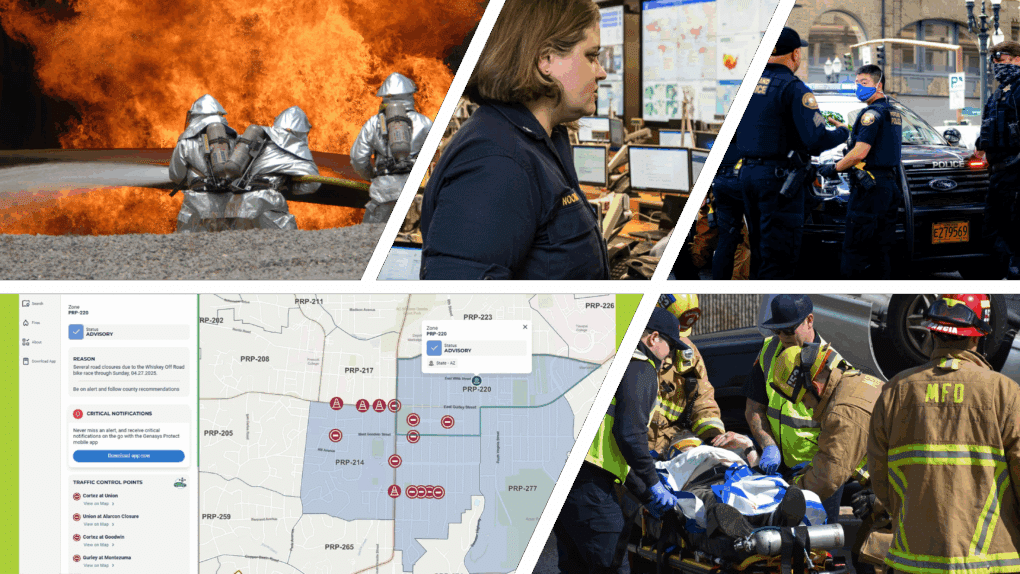By Adam Stewart, Head of Marketing at Genasys Inc.
In the realm of emergency response, the difference between success and failure can often come down to communication. Whether responding to natural disasters or managing complex, human-caused emergencies, the ability of first responders to work together effectively is paramount. Internal collaboration and the seamless integration of emergency communications software play critical roles in these scenarios, ensuring rapid, coordinated action that can save lives.
Streamlining Communication with Advanced Software
During emergencies, law enforcement and fire agencies exist within a hyper fast-paced environment where timely and clear communication is crucial. While it may seem like an easy solution to use personal text messaging, Signal, or WhatsApp, these apps do not offer the security required by law or the transparency mandated in legal situations.
Not only do many personal apps lack a secure platform, but any communication within these agencies, from incident command notifications to responder-to-responder messaging, is subject to state and federally mandated compliance laws (including possible prosecutorial review) and must be stored in a secure system.
Emergency communications software that specifically facilitates and encourages internal collaboration offers robust solutions that enable first responders to share critical information quickly and securely. This technology supports real-time data sharing, from incident reports to resource allocation statuses, ensuring that every team member is on the same page.
Emergency notification and communication software should be intuitive, reliable, and capable of integrating with existing systems. This ensures that during high-pressure situations, the technology enhances, rather than complicates, the flow of information. Agencies must consider factors such as ease of use, interoperability, and the ability to scale during widespread emergencies.
Enhancing Coordination with Zone-Based Planning and Management
One critical situation many agencies are finding themselves in more frequently is evacuation response – including shelter-in-place and repopulation. Evacuation management during and after emergencies is a complex operation that requires flawless internal collaboration among multiple agencies. Advanced communications solutions equip command centers and field operatives with the tools they need to execute well-organized evacuations.
By using sophisticated mapping and tracking technologies, responders can manage and oversee evacuations efficiently, minimizing chaos and ensuring public safety. Using a zone-based mapping system, emergency managers have the ability to quickly assess situations, make decisions, model and plan for possible scenarios, and communicate those decisions to all involved, including cross-agency participants and the public. This is critical during calls for evacuation and needs for shelter-in-place. Zone-based planning even helps orderly repopulation efforts after life-threatening danger has passed. With modern zone-based planning solutions, the time for clearly communicating accurate geo-targeted instructions across-agencies is reduced from hours to just minutes.
This is where high-quality emergency communications software becomes invaluable, enabling seamless interactions between different teams and agencies. The right tools help coordinate efforts, streamline processes, and provide situational awareness that is critical during evacuations.
Improving Reaction Time with a First Responder Messaging System
Looking ahead, the goal for police and fire agencies should be to continuously improve and adapt their internal collaboration frameworks to meet future challenges. Investing in scalable communications solutions allows these agencies to expand their capabilities as new technologies emerge and as the scale of emergencies changes.
Future-proofing emergency communications involves regular updates, training, and the integration of new technologies that can provide deeper insights and more effective communication tools. Agencies should prioritize creating a resilient infrastructure that can adapt to new threats and maintain high standards of collaboration and communication.
Summing Up
In conclusion, enhancing internal collaboration through advanced and compliant emergency communications software and strategies is not just about adopting new technologies. It’s about creating a cohesive, efficient, and effective approach to emergency response that saves lives and protects communities. As we continue to face a growing array of emergency situations, the interconnectedness of these strategies will serve as the backbone of successful operations.
Contact Genasys to learn more about our protective communications suite of solutions.

















